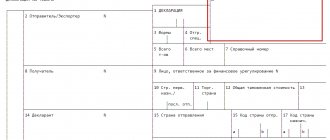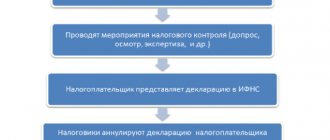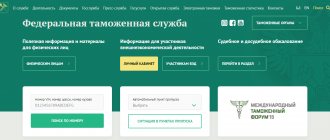Export from the Russian Federation to the EAEU. Export registration procedure. A distinctive feature of exports within the EAEU is the absence of customs duties on goods transported within the borders of the EAEU.
EAEU EAEU EAEU EAEU EAEU EAEU沒有關稅。
Export from the Russian Federation to the EAEU. Export clearance procedure. A distinctive feature of exports within the EAEU is the absence of customs duties on goods moved within the EAEU borders.
This applies to the vast majority of products. However, there are separate product groups, the sale of which is accompanied by a standard declaration with payment of duties. For example, goods of group 27 according to the Commodity Nomenclature of Foreign Economic Activity.
You should carefully monitor changes in legislation within the EAEU, since EEC decisions and other legislative acts are periodically issued that restrict the movement of goods of certain groups, even within the EAEU.
Also, for some goods exported within the EAEU, a FSTEC license must be issued. This license is a permit to export goods included in the list of dual-use goods. You should carefully monitor whether your product is included in this list or not.
Cases of customs transit
Cargo is placed under this procedure in cases where:
- cargo is transported from one part of the country to another, but by sea or through the customs space of other countries that are not included in the Customs Union;
- CU products are placed under the customs procedure of export or free customs zone;
- part of the route along which foreign products are transported to third countries passes through the territory of the Customs Union.
ATTENTION! We work only with legal entities.
Customs transit options:
- Transportation of foreign-made goods between customs points of destination and departure.
- Transportation of imported goods from the point of arrival to the customs post located within the country.
- Movement of imported goods from the internal control point to the place of departure.
- Transportation of cargo between internal customs departments.
- Transportation of cargo by sea or through the territory of third countries, despite the fact that the places of arrival and departure are the customs authorities of the Customs Union.
Deadlines for possible revocation of customs declaration
The declarant does not have the right to send a request for revocation at any time. There are product statuses allowed for this, but sometimes it is too late for such an action.
Revocation of customs declaration when exporting goods
If goods are exported from the country, you can withdraw the declaration:
- while the declaration lasts;
- after the customs decision on release is made.
You can submit a recall request as long as the goods have not actually left the customs territory.
IMPORTANT! In such an application, it is required to indicate exactly where the declared goods are currently located. It is advisable to indicate the reason, but not required. It is even possible to simply change the declarant’s decision regarding the export of goods.
In the electronic declaration form, only documents in the following statuses are allowed to be recalled:
- “the declaration has been registered”;
- “declaration under verification”;
- “The decision on the goods has been made.”
If a document is submitted using remote declaration technology, then a review is also allowed with the status “Goods provided.”
When to file a new declaration is up to the declarant; the law does not limit him in terms of time.
Revocation of customs declaration when importing goods
If goods are imported into the country, the customs declaration can be recalled only before customs makes a decision on their release; accordingly, the status of the cargo in the electronic declaration can be anything other than “Inspection of goods.”
Goods under a revoked declaration are placed in temporary storage for up to 2 months. If you do not submit a new declaration within this period, they will be detained by customs.
Documents and submitted information
The customs transit procedure is necessarily accompanied by the submission of a DT. The customs operation begins when the declaration is submitted at the place of arrival, and ends when the cargo is delivered to the customs post of departure. The DT contains detailed information about the customs procedure, the declarant, the vehicle, the cargo, including:
- Name;
- description;
- HS code;
- manufacturer;
- countries of origin and destination;
- weight and quantity;
- customs value;
- information about benefits and preferences and more.
Note! The product must be permitted for import into the territory of the Customs Union.
Any participant in foreign economic activity has the right to submit a customs declaration under the customs transit procedure, i.e. legal entities and individuals, individual entrepreneurs, cargo owner, forwarder, customs broker, representative of a transport company and some others.
After accepting the documents, the DT is assigned a number, which is placed in the upper right corner.
GTD - what is it?
When importing or exporting goods abroad, a cargo customs declaration (CCD) is submitted, which is provided at the time the cargo is moved across the border of the Russian Federation (Article 123 of the Customs Code). The declaration will also be required when changing the customs regime and in other cases referred to in Art. Art. 183, 184, 247, 391 of the Customs Code of the Russian Federation.
Within what period must a new customs declaration be submitted when a customs declaration is revoked ?
The official manager of the cargo is responsible for this procedure: its owner or a person authorized by him (customs broker). In this situation, he is called the declarant .
A customs declaration is a written application submitted to the customs authorities, containing basic information about the product that is important for customs purposes. The declaration can be:
- complete or incomplete;
- periodic;
- temporal.
It is allowed to submit it both in printed and electronic form, for which there are special services.
What are the cases and conditions for revoking a customs declaration ?
Features of customs clearance according to the EAEU Customs Code
According to the law, cargo that is placed under the customs transit procedure is exempt from paying taxes, excise taxes and customs duties of any kind. But you still need to make these payments. The amount is calculated as for the import procedure 40, i.e. release for domestic consumption, and at maximum rates and maximum customs value of goods. Depositing security is a kind of guarantee of delivery of goods to the point of departure. Cases when security is not paid are specified in Art. 146 TN EAEU.
Prohibitions and restrictions must be observed, with the exception of non-tariff and technical regulation measures.
Goods under the customs transit procedure can only be transported by vehicles approved for international transport. This is confirmed by special evidence. Which in turn implies compliance of vehicles with the requirements of the EAEU Labor Code and compliance with the rules of international transportation of goods. In particular, when moving goods by land transport, the cargo compartment of the vehicle should be sealed or sealed. This requirement does not apply to aircraft and ships, as well as to those cases when:
- live animals are transported;
- postal items are transported in special containers or bags;
- transportation is carried out through the territory of states that are not part of the Customs Union;
- goods placed under the customs transit procedure are transported in the same cargo compartment with goods that are not placed under this procedure.
Responsibilities of the declarant during the declared customs transit procedure:
- Register the DT and accompany it with a package of documents confirming the specified information.
- Ensure compliance with the prohibitions and rules established by the EAEU Labor Code.
- Provide customs authorities with the opportunity to identify goods and inspect them.
- Provide a security certificate.
Note! The customs inspector may decide on the need for customs escort.
When placing goods under this customs procedure, the inspector determines the timing, taking into account the type of transport and the characteristics of the route, as well as the place of delivery of the goods. At the request of the declarant, the deadlines may be extended. But the maximum period is established by law: no more than 1 month per 2 thousand km. The place of delivery of goods is the Customs Control Commission, which relates to the customs authority of destination. The place of delivery of goods can be changed, including during the customs transit procedure, if it is located in the area of activity of the same customs authority of destination.
Purposes and conditions for revocation of a customs declaration
It is sometimes necessary to revoke a customs declaration submitted in writing, and the law allows such an action in Art. 134 of the Customs Code of the Russian Federation. This provision provides one “valid” reason for such a withdrawal – a change in the customs regime. For this purpose, you can revoke a goods declaration if the following conditions are met:
- goods have not yet been released across the border;
- the declarant submits to customs officers a written (electronic) statement of intention to change the customs regime by revoking the previous declaration;
- as a result of the customs inspection, no facts of unreliability of the submitted declaration were revealed before the declarant drew up a request for withdrawal. Minor inaccuracies are allowed that cannot affect the decision of customs officers to release goods: inventories, typos, minor technical inconsistencies, spelling or punctuation errors.
If all conditions are met, customs officers will issue permission to revoke the customs declaration. From this date, the declarant has 15 days to submit a new declaration with a different customs regime indicated in it. Instead of permission, the customs authority may also refuse a request to revoke the declaration.
NOTE! In the Letter of the Federal Customs Service of the Russian Federation dated June 29, 2010 No. 01-11/31847 “On the non-application of certain norms of the Customs Code of the Russian Federation dated May 28, 2003 No. 61-FZ”, Art. 134 does not apply, therefore any motives of the declarant may serve as a reason for filing a response. If the conditions are met, there should be no refusal.
Refusal of permission to revoke a customs declaration
The customs inspector will refuse to revoke the declaration if:
- before the application was received, customs officers began an inspection and notified the declarant about this;
- the customs authority signed the appointment of the examination;
- During the inspection process, violations were identified that were subject to criminal or administrative liability.
FOR YOUR INFORMATION! After the completion of verification activities, the withdrawal of the declaration can be submitted again, and if no violations were identified, it will be resolved.
The declarant will receive a refusal if the newly submitted document indicates the same customs regime as in the revoked declaration (clause 2 of Article 132 of the Customs Code of Russia).
If the inspector refuses to provide the refusal in writing, the declarant has the right to appeal such refusal (Articles 45-57 of the Civil Code of the Russian Federation).
What violations can be detected at the customs office?
According to paragraph 2 of Art. 23 of Law No. 173-FZ, based on the results of inspections, customs authorities have the right to:
- issue an order to eliminate the violations found;
- apply penalties for violation of legislation (administrative and criminal)
The participation of customs officers in the VC makes it possible to identify and suppress such illegal actions of participants in currency legal relations, such as:
- Violation of the obligation of residents to repatriate (reinvest) foreign currency earnings in the Russian Federation (from July 1, 2021, the obligation applies only to raw materials exported goods).
- Schemes for withdrawing foreign currency from the Russian Federation by inflating the cost of import contracts. In order to identify such schemes, customs conducts an examination of goods to identify its real market value and regularly transmits to the Bank of Russia information about declarations with signs of false or unreliable information for timely blocking of suspicious transactions by banks.
- Concealment of export proceeds, including through the use of sham transactions. If the Federal Customs Service suspects that a transaction is being conducted through a shell company, it reports this to the Federal Tax Service. As a result of the inspection, such a legal entity may be excluded from the Unified State Register of Legal Entities.
Example
made a delivery of goods to a foreign partner in the amount of 500 thousand US dollars, which is confirmed by the FCS branch. Payment from the partner was received in the amount of 450 thousand US dollars. The deadline for fulfilling obligations under the contract has expired, and the company has not taken any action to collect the balance of the contract amount. The bank initiated a review of information about foreign accounts and discovered that the balance of funds under the contract in the amount of 50 thousand dollars was transferred to the account of the company’s representative office abroad directly from the buyer “to finance the activities of the representative office.” A penalty was imposed on the management of the company under Art. 15.25 Code of Administrative Offenses of the Russian Federation “Violation of currency legislation.”
- Identification of violations during the movement of currency values and cash currencies. Most citizens of the Russian Federation are probably familiar with this area of customs activity, since anyone who has traveled abroad or returned from there with expensive purchases has encountered similar activities concerning individuals. Therefore, we will not dwell on it in detail. Let us only note that for legal entities there are sometimes even more stringent rules for moving certain categories of currency values (precious metals, precious stones) across the border than for “physicists”.
Export of goods from the customs territory of the union
The export or departure of goods from the customs territory of the Customs Union requires their mandatory customs clearance. According to the current EAEU Customs Code, when exporting from the customs territory of the Customs Union, to the customs authority, depending on the type of transport, it is necessary to provide all the necessary shipping documents and information and pay customs duties. After customs operations are completed, the goods can be exported from the customs territory of the customs union.
Countries that make up the territory of the EAEU
The countries that make up the territory of the EAEU represent a special form of trade and economic integration. In the single customs territory of the EAEU, all customs barriers have been abolished, i.e. There is no need to pay customs duties for the movement of goods between countries that are members of the Union. On the territory of the member states of the customs union there is a Unified Customs Tariff (UCT), a unified customs legislation. The territory of the EAEU member states is delineated by the customs border, separating them from countries that are not included in the EAEU countries. The customs border includes customs checkpoints through which goods are imported and exported. Goods transported across the customs border are subject to mandatory customs clearance.
Step-by-step instructions for revoking a customs declaration
The procedure and nuances for filing a revocation of a declaration are given in Art. 192 of the Customs Code.
- Check the status of the customs declaration via the electronic service. If the corresponding line says “Inspection of goods,” wait until the status changes to “Inspection completed.” In other cases, go to step 2.
- Open the declaration menu in the electronic declaration program and select “Withdraw declaration”. If there is no such choice in your program, it means that in this status you cannot perform a review. Return to step 1 - check the status of the goods.
- After selecting “Recall” from the menu, a window will appear in front of you in which you need to indicate the reason for the recall of the customs declaration and the place where the cargo is currently located.
- Click the "Recall" button.
- Waiting for a response from the customs inspector.
- If the received decision is positive, from that moment the declaration is withdrawn.
- Do not forget to submit a new declaration before the temporary storage of the cargo at customs expires. Art. 134 of the Customs Code requires this to be done within 15 days after written permission from customs to revoke the previous declaration.
ATTENTION! If the declaration was submitted electronically, then the request for revocation must be certified by the electronic signature of the declarant.






